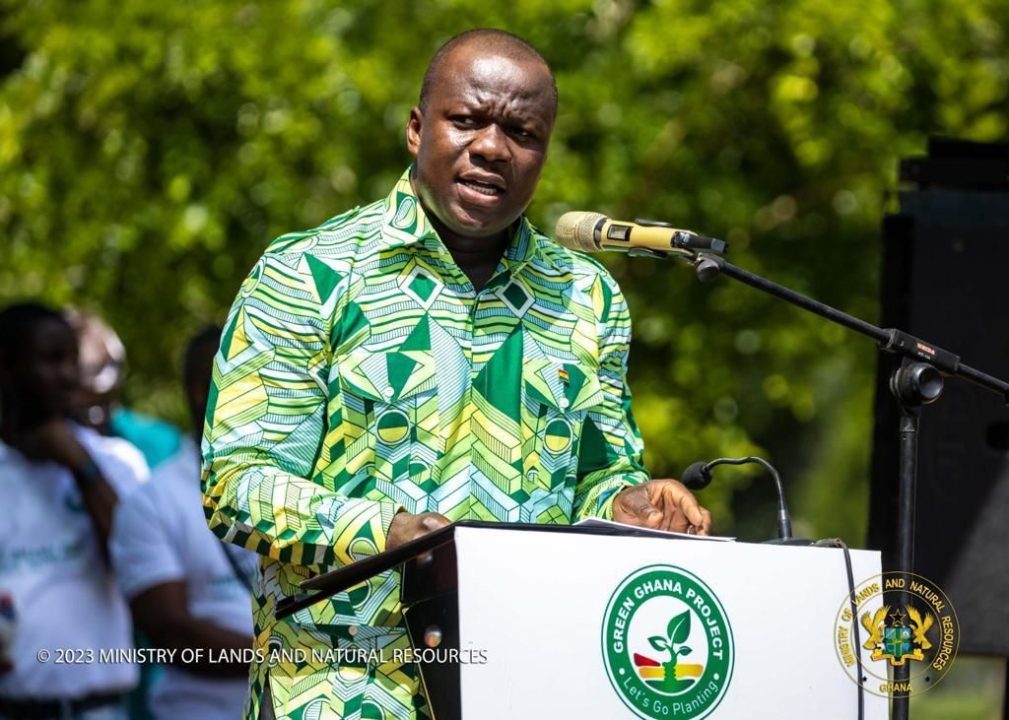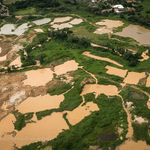Gold production in the next two years is expected to increase exponentially with the coming onstream of 3 new mines.
3 new mines
These are Cardinal Resources Namdini in the Upper East Region, Azumah Resources in the Upper West Region and Newmont Ahafo North in the Ahafo Region.
Minister of Lands and Natural Resources, Samuel Abu Jinapor, announced this while reacting to news that Ghana has toppled South Africa to become the number one producer of gold in Africa.
32% increase in gold production
A 32% increase in gold production in 2022, has lifted Ghana to the position of the largest gold producer in Africa displacing South Africa.
3.74m ounces produced in 2022
Gold output rose from 2.82 in 2021 to 3.74 million ounces, the equivalent of 129.2 metric tonnes in 2022 compared to the 113.6 metric tonnes produced by South Africa.
3.08m ounces from large-scale miners
Gold produced by large-scale miners increased from 2.72 million ounces in 2021 to 3.08 million ounces in 2022.
The large-scale gold sub-sector recorded its highest output in the country’s history in 2022.
655,565 ounces from small-scale miners
Gold exports from the small-scale sector rose from 98,001 ounces to 655,565 ounces of the same period.
To 5 gold producers in the world
With this feat, Ghana is now the 6th largest gold producer in the world after the top five namely; China-330 metric tonnes, Australia-320 metric tonnes, Russia-320 metric tonnes, Canada-220 tonnes and USA-170 metric tonnes,
$6.6bn gold export receipts in 2022
Export receipts in 2022 from gold generated $ 6.6 billion to retain its position as the leading source of export revenue.
The amount is over $1 billion more than the $5.083 billion realised in 2021, representing a decline from $ 6.998 billion recorded in 2020.
Ghana was producer in 2019
In 2019, Ghana became the largest gold producer in Africa, toppling South Africa.
According to data, Ghana exported 158 tonnes of gold in 2018; about 15% increase over the previous year, and as a result went ahead of South Africa, which produced 139.3 metric tonnes that year.
30% decline in production in 2021
But, in 2021, gold production in Ghana dropped by 30%, the country’s lowest in more than 10 years.
A combination of output and the expansion of production at existing mines drove the large-scale sector’s contribution to national gold output.
77,620 ounces sold to BoG
Producing companies sold over 77,620 ounces of gold under the Domestic Gold Purchase Programme, a scheme launched by the Bank of Ghana to boost reserves.
In 2015 Ghana introduced a three per cent withholding tax on small-scale mining – and the sector which contributes a third of the country’s gold production was hit hard.
The miners started smuggling the precious mineral, reducing official gold production volumes.
The miners were required to pay three per cent withholding tax on gold at the point of export through the Precious Minerals Marketing Company (PMMC).
However, in January 2022, the government in response to the fall in production numbers scrapped the three per cent withholding tax on gold at the point of export and instead introduced a 1.5 per cent tax on unprocessed gold.
$1.1bn gold smuggled
Investigations by the Economic and Organised Crime Office (EOCO) have revealed that Ghana lost a total of $1.1 billion through unaccounted gold exports between 2019 and 2021.
Jinapor attributed the feat of Ghana being Africa’s top gold producer to policies and programmes being implemented by the government.
He cited the revival of AngloGold Ashanti Obuasi Mine which was put under care and maintenance in 2016.
According to him, the revival of these 3 new mines comprising two mines and the expansion of output by some existing mines as well as the reduction of withholding tax rate on unprocessed gold by small-scale miners from three to 1.5% contributed significantly to the gains made.
He disclosed that in 2022, AngloGold Ashanti Obuasi Mines increased production by 132% compared to 2021.
In addition, the Bibiani Mine which had not produced gold in the past seven years contributed over 52,000 ounces to gold output.
Jinapor stated that gold exports from small-scale sector also increased by 570% from 3,429.91 kilogrammes in 2021, to 22,158.25kg in 2022.
The Minister assured that government remains committed to increasing the contribution of the mining industry to the economy through local content and local participation as well as value addition to minerals.
He said the gold for oil initiative will ensure that Ghana leverages on gold resources through a much more competitive trade and stabilize the cedi while delivering cheap oil.
He expressed appreciation to Ghana Chamber of Mines for their contribution and participation in achieving this feat.
The Minister said government will continue to work with the chamber and all other stakeholders in the spirit of transparency, integrity, and good faith to ensure optimal benefits.
- Friday, May 9, 2025 Newspaper Headlines - 9 May 2025
- Adangabey brightens rural kids’ future from his wheelchair - 9 May 2025
- Stanbic donates ICT equipment to UHAS for digital learning - 9 May 2025




